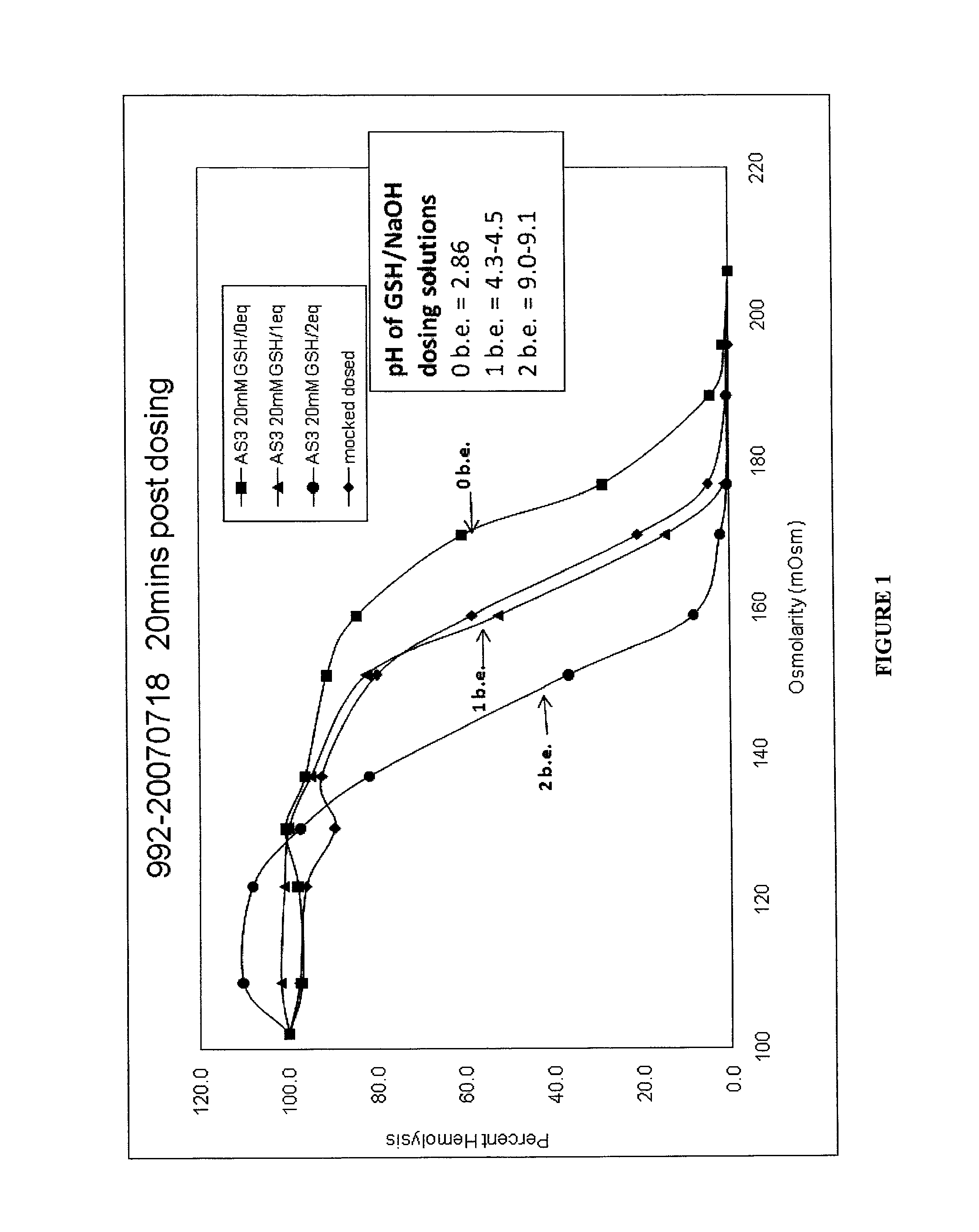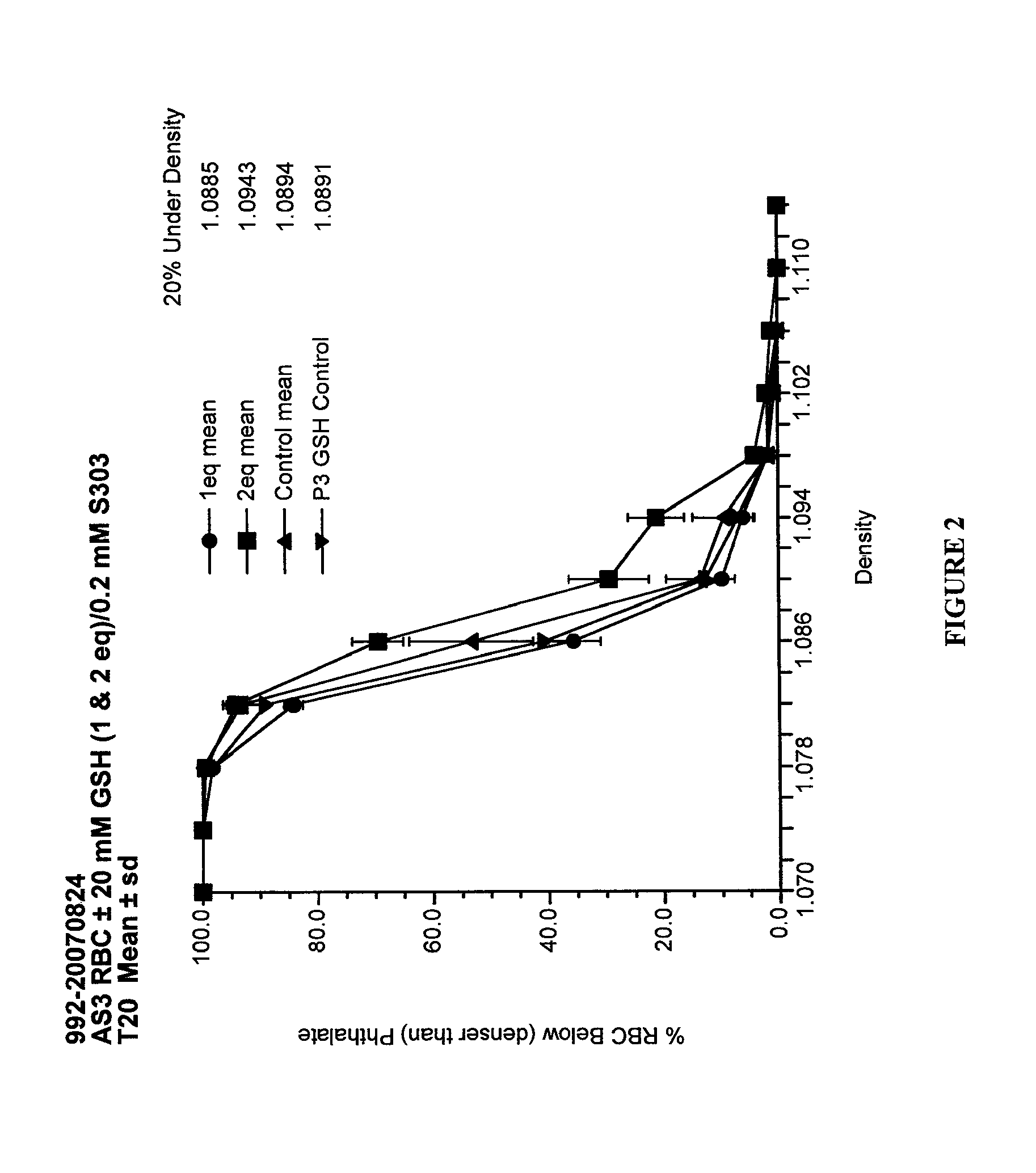Quenching methods for red blood cell pathogen inactivation
a technology of red blood cell and pathogen inactivation, which is applied in the direction of drug composition, biocide, extracellular fluid disorder, etc., can solve the problems of unlicensed tests that do not adequately screen for the presence of non-viral microorganisms such as bacteria or protozoans in the blood supply, and remains a serious health problem, so as to reduce unwanted side effects, reduce or minimize adverse effects, and increase cell dehydration
- Summary
- Abstract
- Description
- Claims
- Application Information
AI Technical Summary
Benefits of technology
Problems solved by technology
Method used
Image
Examples
example 1
Organism Preparation
Examples, Materials, & Methods
[0126]Bacterial and viral strains used for these studies were clinical isolates obtained from either the California Department of Health Services or the American Type Culture Collection.
[0127]Bacteria: Frozen working stocks of bacteria were inoculated into a 500 mL flask containing a mixture of 50% yeast extract media without added glucose and 50% fetal bovine serum. The flasks were incubated overnight in a shaking waterbath set at 37° C. Gram positive bacteria were spiked into the blood product directly from the overnight culture. The overnight cultures of Gram negative bacteria were further subcultured by a 1:1000 dilution into fresh culture medium and incubated as above until they reach log phase as determined by optical density. This log phase growth was spiked into the blood product for PI experiments.
[0128]Viruses: Cell free viral stocks were prepared using the appropriate cell lines for each virus. These stocks were frozen at ...
example 2
Preparation of RBC Units
[0129]Blood was received at Cerus as 450 mL or 500 mL units of whole blood either on the day of collection or up to 3 days after collection. In most cases the whole blood was leukofiltered before being processed into RBC units. Occasional units could not be successfully leukofiltered (e.g., blood from donors with sickle trait) and these units were used without leukofiltration for PI studies of organisms that are not known to survive inside white blood cells.
[0130]After leukofiltration, the blood was centrifuged and the plasma was expressed. The desired RBC additive solution, such as AS-3 (NUTRICEL®), was then added and the resulting RBC unit was either used immediately or stored at 4° C. until use.
example 3
Pathogen Inactivation (PI)
[0131]The PI process involves inoculation of RBC units with a culture of the organism to be tested. The typical target input titer of organisms in the RBC units was approximately 106 cfu or pfu / mL of RBC. In most cases the organism volume (including any culture medium) was approximately 1% of the RBC unit volume and was not typically greater than 10%. To evaluate inactivation of lower, more physiologically relevant, levels of bacteria, inputs from 10 to 105 cfu / unit were used. For low level input studies two RBC units were pooled, spiked, then split into a Test unit that was treated as described herein and a Control unit to which only quencher (e.g., GSH) was added (no pathogen inactivator, e.g., S-303) and which was kept under the same temperature conditions as the Test unit.
[0132]After addition of the organism into the RBC unit, the unit was mixed by grasping the ends of the container and moving the ends 10 times in a figure eight, or bicycle pedal, motio...
PUM
| Property | Measurement | Unit |
|---|---|---|
| time | aaaaa | aaaaa |
| time | aaaaa | aaaaa |
| time | aaaaa | aaaaa |
Abstract
Description
Claims
Application Information
 Login to View More
Login to View More - R&D
- Intellectual Property
- Life Sciences
- Materials
- Tech Scout
- Unparalleled Data Quality
- Higher Quality Content
- 60% Fewer Hallucinations
Browse by: Latest US Patents, China's latest patents, Technical Efficacy Thesaurus, Application Domain, Technology Topic, Popular Technical Reports.
© 2025 PatSnap. All rights reserved.Legal|Privacy policy|Modern Slavery Act Transparency Statement|Sitemap|About US| Contact US: help@patsnap.com



